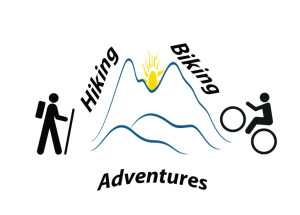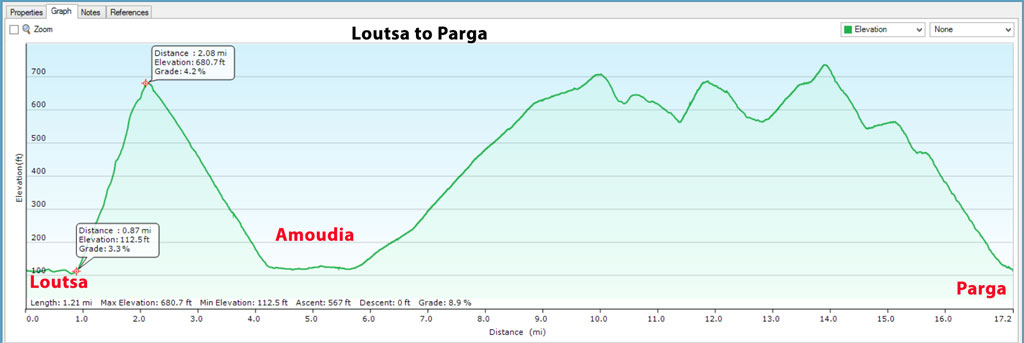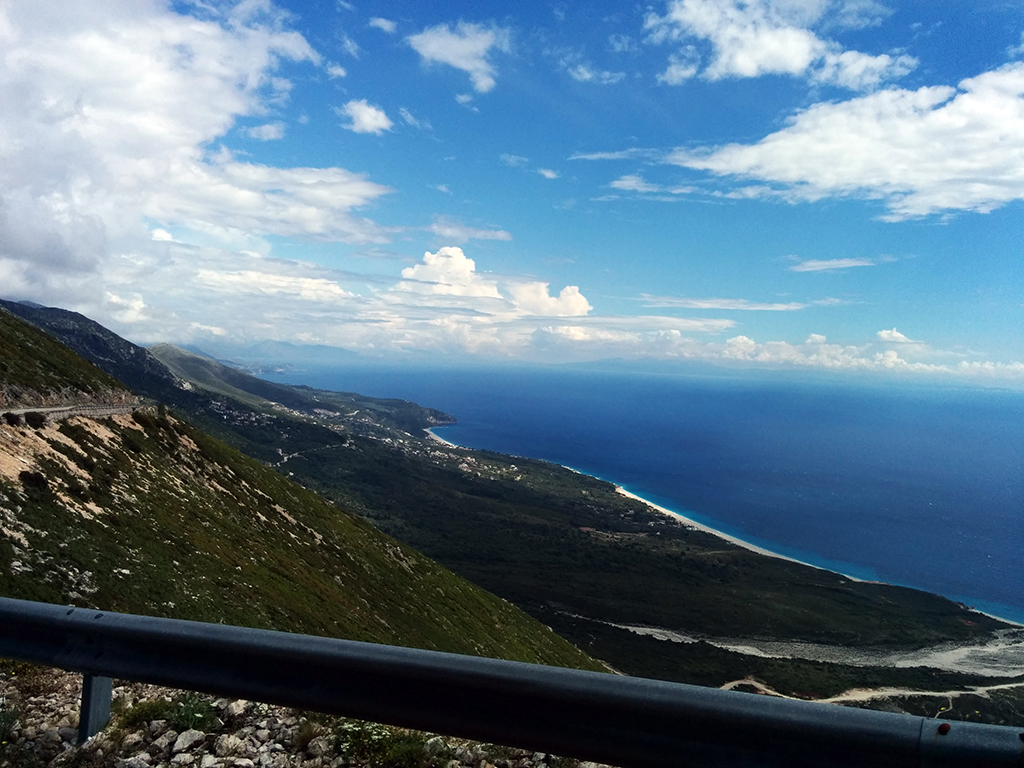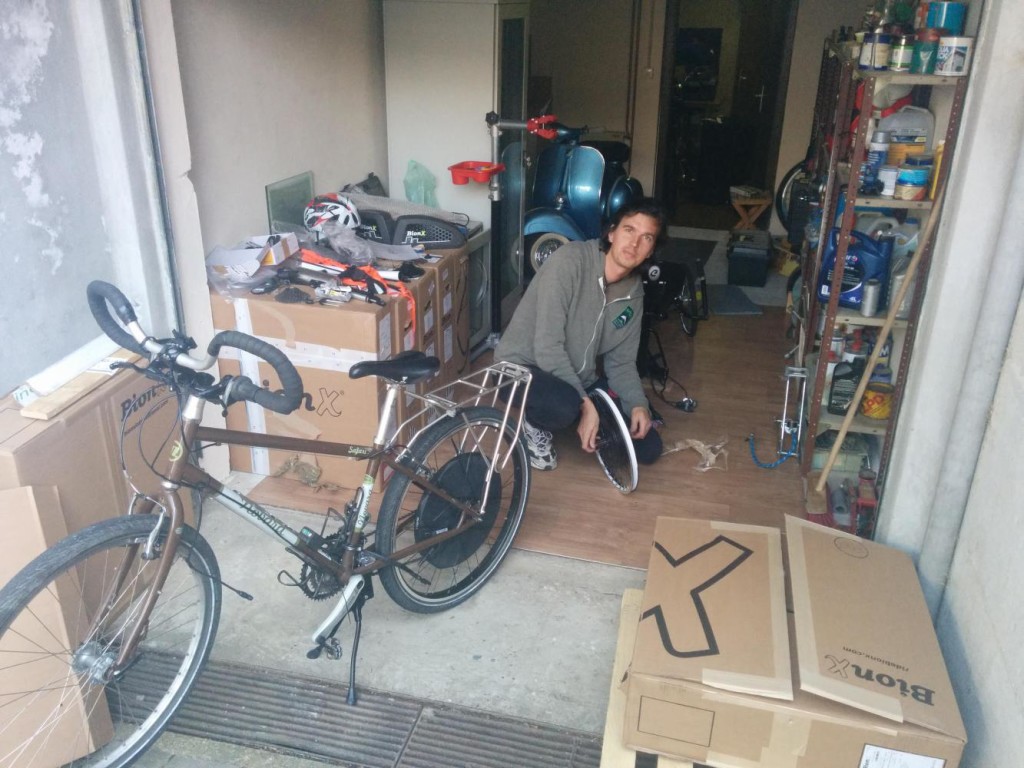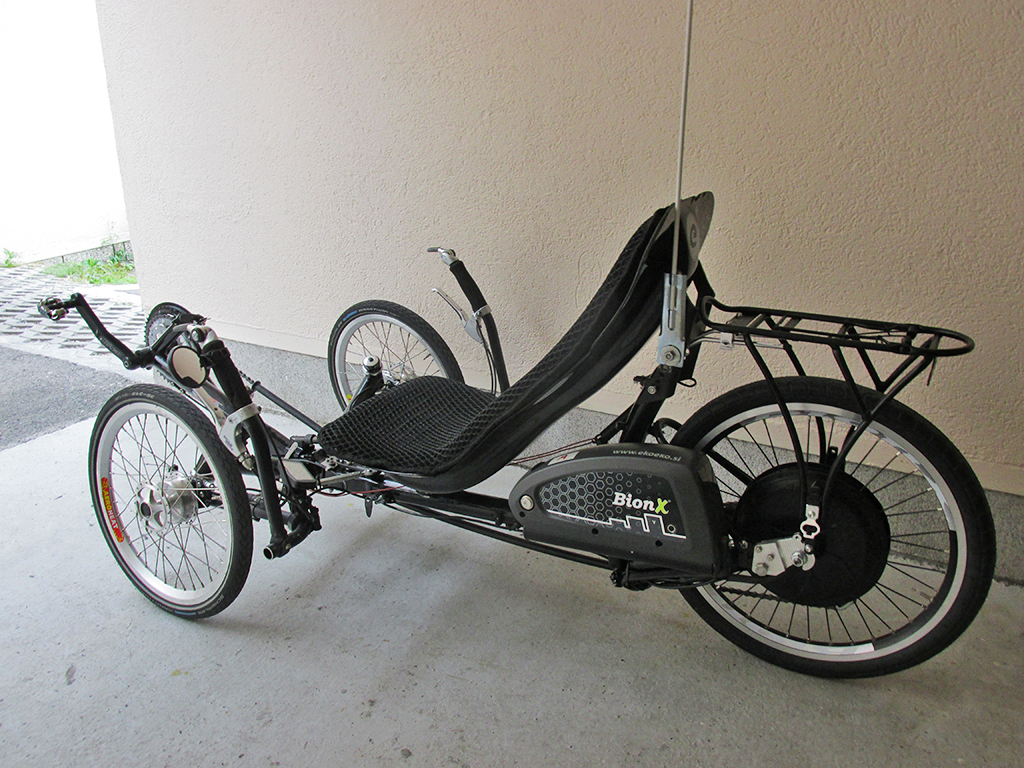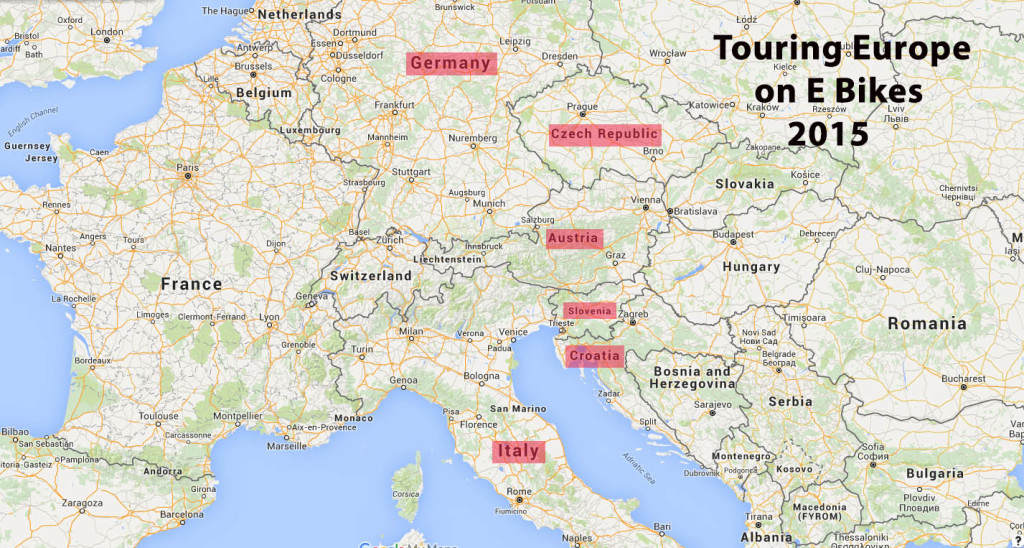E-Bikes
Page Contents
- E-Bikes
- 4000 Kilometers through 6 European Countries
- Why We Decided to Change to E-Bikes
- Purpose Built E-bikes
- Add on E-bike kits
- Our bikes
- Our Final Choice
- BionX
- Who is BionX?
- Taking an e- bike to Europe
- Installation of BionX E-Bike System
- How far Can You Really Go on a Single Battery Charge
- How Far Did We go on a Single Charge?
- Our Assessment of BionX E-bike System after 4000 kilometers Mostly in Mountains
- BionX System Pros
- BionX system Cons
- Final Thoughts on Touring with E-Bikes
- What follows this rather long introduction to touring Europe on E-bikes?
4000 Kilometers through 6 European Countries
Why We Decided to Change to E-Bikes
If you have read any other pages in our website, you have seen that we have often chosen to pursue challenging “holidays”. The website stories start in 1984, our very first adventure, when we bicycled from Costa Rica to Peru and tried to bike through the infamous Darien Gap of Panama.
Purpose Built E-bikes
This market is expanding so fast that whatever I write here will probably be out of date by the time you read it. We have found a lot of purpose built e-bikes to choose from. Purpose built bikes come in three flavors: Front Drive, Mid-Drive and Hub. This site compares the systems: http://electricbikereport.com/electric-bike-motor-comparison/ Purpose built e-bikes are necessarily more expensive than adding a kit to your existing bike. Think of it this way. With a purpose built bike, you are buying a bicycle and a motorized system. How much did you spend on your existing bike? Are you into quality components or satisfied with the average? What kind of frame do you have? Why? Does your current bike fit you well? Do you like it? When you buy a purpose built bike, first you must pay to get the same quality bike you already have or want. Then, you pay for the motor. A high end motor that has a chance of giving you the distance you want is expensive by itself. A purpose built bike may split the costs between bike components and motor quality in order to keep the price competitive. One more thing to keep in mind about a purpose built is that the distance you can go is relative to battery size as well as motor. To design a big battery into a frame means the longer distance you want to go, the bigger the frame configuration. Take a look at this website and you will understand what I am saying: https://www.electricbike.com/purpose-built-frames/
Research Resources
http://electricbikereport.com/
http://www.nycewheels.com/bikes.html
http://ridebionx.com/products/oem/oem-customers/ is a list of manufacturers who build E-bikes with BionX system.
Add on E-bike kits
The add on market offers the same three types of systems as do the purpose built bikes: Front Drive, Mid-Drive and Hub: http://electricbikereport.com/electric-bike-motor-comparison/ The number of choices available as add on kits is staggering. We spent weeks researching. Some of the bigger , and some really different options are listed here.
Research Resources
http://electricbikereview.com/tag/kits/
http://electricbikereport.com/electric-bike-kit/
http://www.bikeradar.com/gear/article/buyers-guide-to-electric-bike-kits-30175/
http://www.nycewheels.com/electric-bicycle-conversion.html
https://www.electricbike.com/bafang-bbso2-750w-mid-drive/
https://www.electricbike.com/mid-drive-kits/
http://ridekick.com/electric-bike-conversion/
http://www.eco-wheelz.com/articles/quality-vs-cheap-electric-bike-kits.php
Our bikes
Mike rides a Novara Safari from REI. This is the same bike that he rode last year in Europe. It is 2014 model that has a 26 inch wheel and rim brakes. REI has a new model out in 2015 that has a 29 inch wheel with disc brakes and cost $200 more. Mike was very satisfied with the performance of his bike last summer. He had no issues using the rim brakes even though he was pulling a heavy Bob’s Trailer and had panniers on his bike. We ascended and descended long and extremely steep hills. As far as he was concerned, there were no issues with the bike.
I rode two different trikes over the course of the summer. I started with an Edge E2 folding trike similar to the one I rode last summer. This trike was built up from a prototype frame with added improved production parts that resulted from feedback on the original prototype. All wheels were 16 inch. In the meantime, E2 as a company had dissolved over the end of 2014. They have since restructured and resurrected as http://www.evolvetrikes.com/index.html. But the engineer for E2, Bill Gillette, separated from the company and has continued developing a trike in his own manner and is helping us with this new one.
In July, I switched to Azub TRIcon trike with 26 inch rear wheel manufactured in the Czech Republic. Specifically designed as a touring trike with all the amenities, it was a workhorse. More about why I switched later. Since we had our own bikes with the components and fit we liked, we chose to put money into the motorized kit as an add-on instead of buying a purpose built e-bike.
Our Final Choice
BionX
Who is BionX?
Motor
BionX motors are built into the rear wheel so the rear wheels on our bikes are removed and replaced with their motorized wheel. There is a wide variety of motor size, meaning watts, and wheel sizes offered, although there is no system available for 16 inch wheels. All the motors are capable of regenerative braking which definitely helps to go longer distances. There are four levels of assistance from which to choose. Changing back and forth is immediately effective.
Battery
The battery packs are Li-ion and also come in a variety of sizes (voltage and Amps) and shapes such as rear rack configurations or down tube mounting. They can be charged on or off the bike.
Console
The console is the computer brains of the system. It is programmable to meet rider specific needs and choices. It has all the information the rider wants to know about battery consumption, assist levels, distance traveled, speed. In addition, it is a diagnostic tool for the company to troubleshoot any problems. The consoles mount directly on the handlebar which makes changing levels of assistance very simple. External wiring connects all the components.
Taking an e- bike to Europe
Because of different laws (of which we were unaware) governing watts and speed between America and Europe, the products that were available were different.
Installation of BionX E-Bike System
We were landing in Ljubljana, Slovenia. Specifically because we wanted to cycle much of Slovenia, but especially because there was a BionX dealer in Ljubljana where we could purchase and have the products installed.
We communicated with Gregor Pecnik, BionX dealer and owner of Absolut by e-mail ( website is www.ekoeko.si, )
Mike’s E-Bike
Mike’s bike was quite easy to retrofit with the BionX kit. His 26 inch wheel would be replaced by a 26 inch wheel with the hub motor built in. The battery was designed to fit on his down tube. Mike got the BionX D-250 DV kit (Not the D-500 available in the USA) Motor: 250 Watts • Range: 135 KM • Battery: Li-Ion / 48V / 11.6 Ah / 555 Wh • Torque (Nom./Max.): 25.0/50.0 Nm • Weight (System): 7.8 kg • Assist Levels: 35, 75, 150, 300% • Cassette body: Compatible with 9/10 speed cassettes from Shimano and SRAM • Wheel sizes: 29er/28“ (for disc brake, rim brake) 27,5“ and 26“ (for disc brake) $2270 US dollars
Anne’s E2-E-Bike
My trike was another matter. BionX did not make a motorized wheel for 16 inches. Their smallest wheel was 20 inches. This is where Bill Gillette stepped in. In his bike shop, he had manufactured dropouts that would support a 20 inch wheel. He made other adjustments to the trike so that it could be motorized and still fold properly. I chose the S series 350 watt motor for the E2, but that was not available in the European market. Anne got BionX P-250-DV for 20 inch wheel (Not the S-350 available in America) Motor: 250 Watts • Range: 135 km • Battery: Li-Ion / 48V / 11.6 Ah / 555 Wh • Torque (Nom./Max.): 9.0/40.0 Nm • Weight (System): 8.5 kg • Assist Levels: 35, 75, 150, 300% • Cassette body: Compatible with 9/10 speed cassettes from Shimano and SRAM • Wheel sizes: 20“, 24“, 26“, 28“ (for disc brake, rim brake) $1980 US dollars
Gregor had no idea we could create so many problems, nor did we really, but he provided a helping hand at every twist and turn.
How far Can You Really Go on a Single Battery Charge
We have read numerous accounts by e-bike enthusiasts as well as by those who find it bothersome to rely on charging a battery to go long distances. At this stage of development, the principle E-bike target market is the commuter who has a defined distance in mind and easy access to power for recharging. Another fast developing target market is the mountain bike population. In all the advertizing, not one manufacturer mentioned E-bikes or E-bike kits specifically designed for long distance touring. We did, however, come across this site with numerous fascinating stories told by e-bike long distance touring cyclists: http://electricbikereport.com/passing-the-10000-km-mark-on-irelands-wild-atlantic-way/#more-18688 Long distance is the issue here if you want E-bike assistance for touring. How far you want to go, or need to go in a day is, of course, personal. We meet two types of touring cyclists when we tour: Those who carry their luggage, and those who join a tour and the support vehicle carries the luggage. Both groups, it is probably fair to say, plan to go between 40 and 60 miles per day. Many do go much farther than that.
Determining how far you can really go on any E-bike is a complicated issue.
How Far Did We go on a Single Charge?
Now, you can begin to see how complicated it is to say how far can you go on a single charge. What we can offer you is based on our experience. We kept a log of battery usage…not everyday…but often enough and in different circumstances to see an average daily distance. But, you must remember all those imperfect conditions that jostled the figures every day. Good paving, bad paving, head wind, tail wind, side wind, gradient, weight of riders and luggage, weight of bicycles, monitor settings, and yes, cadence. Mike: 190 pounds; bike with motorized system: 47 pounds; luggage carried: 50 pounds plus groceries as needed. Anne: 140 pounds; bike with motorized system 57 pounds; luggage carried: 45 pounds We both had our motors set to assist at a higher percentage from 0 to 10 mph. We wanted more assist for the steeper gradients which obviously we ascended at lower speeds.
Our single biggest day, we went 48 miles and climbed 2400 feet.
An average day seems to compute to 36 to 40 miles with no major passes but plenty of hills.
Fun was our goal, not conservation.
Our Assessment of BionX E-bike System after 4000 kilometers Mostly in Mountains
Mike’s D Series 250 DV system
In summary, Mike’s experience with the D Series motor, even though he got the 250 watt system instead of the 500 watt because we purchased the kit in Europe, was largely a great success.
With his weight and the luggage he carried, the D Series power and torque responded immediately to his strong pedaling ability and high cadence.
The big difference was that he did not tire so quickly…and he had fun!
The motor gave him a “turbo boost” from a dead stop on a steep gradient.
He experience two equipment problems during the 4000 kilometers:
After riding in a heavy rain, the monitor collected moisture. It never really cleared up and after a second heavy rain, the monitor completely died. That rendered the system unusable. We needed a new monitor. Replacing a part is done through the dealer. Gregor contacted BionX in Germany and made the claim.
The problem was, how do we get the monitor? Gregor was in Slovenia; we were in Prague.
Anne’s P 250 DV BionX system
The P series motor Anne used on her 20 inch wheel was more problematic. The P motor has 9 Nm torque. Mike’s D series motor has 25 Nm which is 2.5 times higher torque. Ascending steep gradients with luggage apparently overheated Anne’s P 250 motor. Over the course of about 500 kilometers, Anne burned out two P 250 DV motors. They died an instant death after spinning on loose gravel.
Although Gregor and BionX responded immediately to the situation, it took days to get the new wheels. The first time, we rented a car and drove back to Ljubljana. The second time, Gregor drove to us in Croatia. When the second replacement motor began to show signs of overheating, we decided the P Series with 20 inch wheel was not suitable for our kind of travel through mountains with heavy luggage.
That’s when we began the search for a new trike with 26 inch wheel.
BionX would upgrade us to a D-Series motor.
That ended all Anne’s problems. No more overheating. Just a lot of power to get up those 14% gradients. And her new Azub TriCon trike was like pedaling a Cadillac.
A short time later, we received an e-mail from BionX quality control manager in Canada. He asked if we would report the exact circumstances of each motor failure. The wheels were being shipped back to Canada for analysis.
Mike and I remember years ago when we were distributors for a white water kayak company. We reported water filling the support tubes in the kayaks and in the paddle. As distributors, we expected our reports to be extremely helpful in correcting a serious issue. All we got back from the company was denial that water was getting in the tubes. Three years later, they announced their new kayak line no longer had tubes filling with water.
The steps that BionX took in contacting us to take control of the quality of their products was a complete surprise and most refreshing approach. It showed us that they cared.
BionX System Pros
- Warranty on all three parts is three years
- No run around with claims; company stands behind their warranty
- extensive network of dealers worldwide
- Rear hub gearless direct drive hub motors have few moving parts which makes them more reliable than mid-drive motors
- Batteries can be charged on or off the bikes
- Versatile drive system offers throttle mode, pedal assist or regen mode in addition to regenerative braking
- changing assist levels and modes is easy and instantly effective
- Amazing power and hill climbing assistance with the D series, even with touring luggage
BionX system Cons
- Trouble shooting problems necessitates dealer assistance because of complex computer technology at the heart of the system
- Direct-Drive hub motors have drag when unpowered, making the bike feel sluggish to pedal
- System adds 17 pounds of weight to your bike
- Silent performance at lower assist levels but wheel “sings” at higher levels when pedaling hard
Final Thoughts on Touring with E-Bikes
- Generally speaking, we were not interested in pedaling upwards of 50 miles a day
- We never had a problem recharging the batteries: in restaurants for lunch if needed, at campgrounds, even a couple of times in private homes.
- Distances between interesting destinations were well within our desired distance of travel per day
- We still pedaled; we still very much enjoyed the feeling of bicycling and daily accomplishment
- We were able to cycle the mountain areas we loved; without the motor assistance, we would have given that up; perhaps even bicycling altogether
- My stressed breathing all but disappeared
- We had fun!
What follows this rather long introduction to touring Europe on E-bikes?
We cycled about 4000 kilometers in 6 different countries: Slovenia, Croatia, Austria, Germany, Czech Republic, and Italy. We found a lot of scenically rich, challenging, mountain routes that we could not have enjoyed without our BionX motorized systems. We will be sharing routes, maps, gps data, photos, and stories with you on the following pages. We hope that they inspire you, no matter age or physical condition, to continue riding. We are lucky to live in an age where amazing technology can offer us aid as needed and a lot of fun.
Copyright Material
All rights reserved. No part of this page may be reproduced or utilized in any form by any means, electronic or mechanical, including downloading, print screen, photocopying, recording, or by any information storage or retrieval system, without the prior written permission by the copyright owner.

